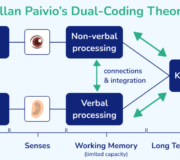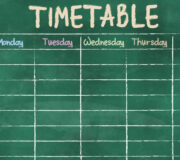What NEW KS1 Assessment Frameworks Mean For KS2 [Maths]
The new KS1 Assessment Framework (Maths) will soon come into effect. Here’s what that means for KS2 Teachers and Maths Leads.
Valentine’s Day 14th February 2018 brought KS1 teachers not one but two lovely treats: the teacher assessment frameworks for the 2017/18 academic year and the same document for the 2018/19 academic year.
While there are no changes for the current cohort of Year 2, the current Year 1s will be teacher-assessed on a new and amended framework.
Of course, the biggest question on everyone’s lips is…are the changes to the KS1 assessment framework for Maths an improvement?
Initially it seems that yes, they are an improvement. Indeed many Year 2 teachers have received it gratefully, perceiving the new frameworks as a way to make their job of assessing children easier.
However, beyond how they are received by KS1 teachers, there’s another point to consider.
If a child’s primary Maths education is an ongoing journey, subject mastery depends on KS2 teachers building upon the strong foundation laid by Early Years and KS1 learning.
With this in mind, are the changes to the assessment framework a gift or a curse for KS2 teachers? After all, in two years time they will receive children into their classes who have been taught and assessed under it.
The Primary School Guide to Maths Assessment
A breakdown of the different types of primary maths assessment, with proven strategies and free resources to use in the classroom.
Download Free Now!Read more: Primary school grades and Formative and summative assessment
KS1 Assessment Framework In Maths: What Does It Mean For KS2?
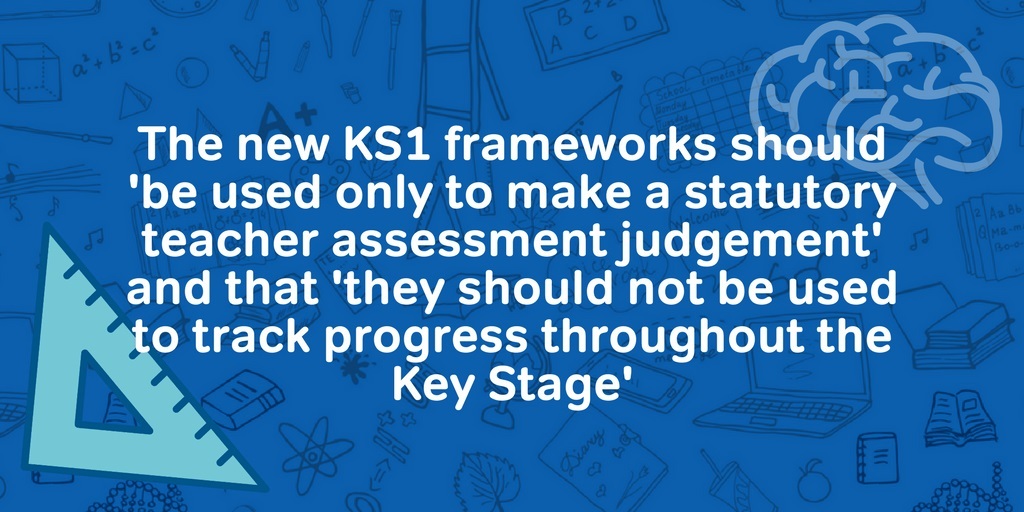
Right off the bat the new frameworks make clear that they should ‘be used only to make a statutory teacher assessment judgement’ and that ‘they should not be used to track progress throughout the Key Stage’.
However, in reality it will be difficult for Year 2 Teachers to shake this limited set of objectives from their minds. As such, even the most well-meaning teachers are likely to place a greater emphasis on the framework objectives in their teaching than other National Curriculum objectives.
Will this potential focus on a select few objectives be a good thing for Year 3 teachers who receive next year’s Year 2 cohort?
Or does this possible narrowing of the Maths curriculum spell trouble for KS2 teachers in the future?
I’ve looked into the KS1 assessment framework for 2018/19 and outlined the potential pros & cons for cohorts going forward into KS2. Read on to see my full analysis.
(Note: Where potential impact is negative it can be assumed that this is only where teachers have not skilfully taught the full curriculum.)
Changes to KS1 Assessment: Place Value Can Be Demonstrated More Simply
In order to demonstrate place value in the Working Towards The Expected Standard (WTS) category, understanding children no longer need to show that they can find the difference between numbers, Nor do they need to use greater than or less than symbols.
In actual fact, those requirements were only ever an example of how they might demonstrate their understanding of place value.
In the new framework it is now clearly stated that this will be demonstrated by a child partitioning two digit numbers. This is the first instance of the new framework being simplified by the removal of examples to back up the statements.
Impact For KS2 Teachers
Children may be less able to use and apply place value knowledge in a variety of situations. Unless teachers deliberately and consistently expect them to apply this knowledge across the KS1 curriculum.
Changes To KS1 Assessment: Does A Lack Of Examples Mean A Wider Curriculum?
Two other objectives in the WTS framework are also now example-less (as are five for Working at the Expected Standard): ‘count in twos, fives and tens from 0 and use this to solve problems and read and write numbers in numerals up to 100′.
We can only speculate as to the reason for the removal of these examples. In one sense, it makes it easier for teachers to assess children – they can look for more general evidence of children meeting the requirements.
On the other hand, their absence may be to encourage teachers to teach more widely, instead of just narrowing the curriculum down to teaching only the examples.
Impact For KS2 Teachers:
Either children are able to apply and demonstrate their understanding of basic Maths principles in a variety of ways, or children are only able to demonstrate understanding at a very basic level.
This very much depends how the KS1 teachers respond to the removal of examples.
New KS1 Assessment Frameworks: An Emphasis On Speaking Maths
In the WTS category, there appears an interesting new phrase in the statement ‘add and subtract two-digit numbers and ones, and two-digit numbers and tens, where no regrouping is required, explaining their method verbally, in pictures or using apparatus’.
This phrase is ‘explaining their thinking/method verbally’ and it is repeated several times throughout the new framework.
Here we have a better alignment with the aims of the National Curriculum, where children’s ability to reason (orally in this case) is now to be assessed.
This also could be seen as an easier expectation as children don’t necessarily have to show their understanding in writing. This addition reinforces the idea that Maths is not just done in the head or on paper, but that it is something to be talked about.
This chimes strongly with one of the principles of the Third Space Learning model of 1-to-1 maths tuition. Encouraging pupil talk in Maths, so they can explain their reasoning, and justify their answers becomes increasingly relevant to achieving mastery in Maths as pupils proceed through school.
Impact For KS2 Teachers:
Children are able to explain their thinking and methods verbally – a very important and useful skill which, if developed in children, will support their understanding.
KS1 Assessment 2018: Focus On Commutativity And Reasoning
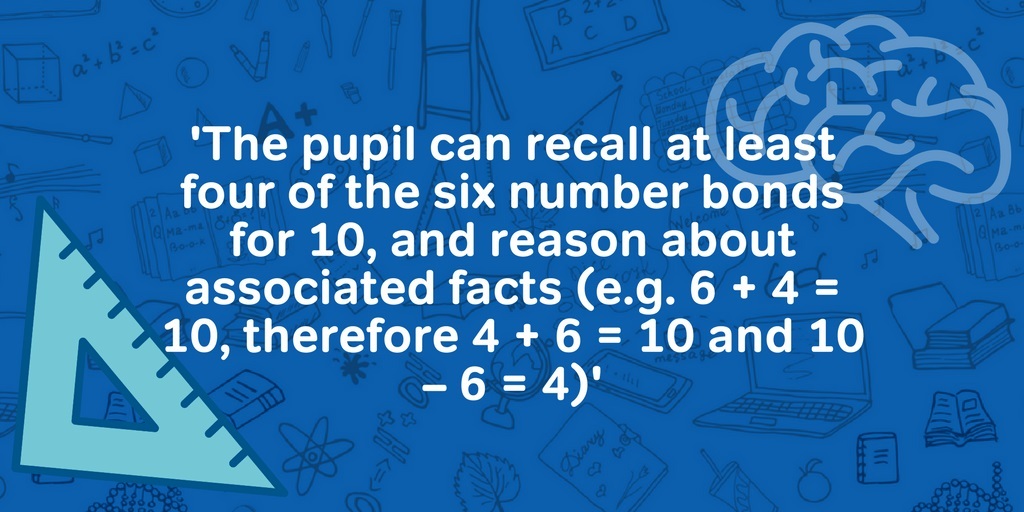
In this statement above, we see a clearer expectation for pupils working towards the expected standard (WTS) to be able to reason with (rather than just use) related subtraction facts.
In the current 2017/2018 framework this was more prominent in the following working at the expected standard statement: ‘The pupil can recognise the inverse relationships between addition and subtraction and use this to check calculations and work out missing number problems.’
Although this WTS statement has been downgraded from ‘facts within 20’ to ‘number bonds for 10’, the inclusion of the word reasoning reminds us that we should be looking for more than just the ability to recall facts. Even for a child working towards the expected standard in Maths.
Impact For KS2 Teachers:
A large majority of children entering KS2 will be secure in their knowledge of the commutative relationship between addition and subtraction. As such, they will be able to reason better using the facts that they have learned.
New KS1 Assessment Frameworks: No More Halves And Doubles
This one gave me pause to question, why?
Perhaps it’s to do with the fact that there should be more of an emphasis on understanding the mathematics behind processes such as doubling and halving, rather than just rote learning of Maths facts.
This, to many Maths Coordinators, will be a very welcome change – shallow learning such as memorisation of methods and recall of facts does not often help a child to understand properly the why and how of Maths.
The negative impact of “Maths tricks” like these are something I have written extensively on for Third Space Learning, you can read about 5 “Maths Tricks” to leave behind in 2018 here.
Having said that, there are actually twice as many statements on the 2018/2019 framework which include the word recall – all of them pertain either to number bonds and multiplication facts, which are probably fair game for recall.
Impact For KS2 Teachers:
If children have a better understanding of Maths because they aren’t only required to learn things by heart, then they’ll have a better chance of understanding the new content in KS2.
However, a lack of quick recall of facts such as halves and doubles could mean that children in KS2 are slower when it comes to mental Maths. A balance of mathematical understanding and quick recall is necessary for success in KS2.
Changes To KS1 Assessment: Efficient Strategies
In the EXS category two objectives get squished into one and an excellent phrase gets added:
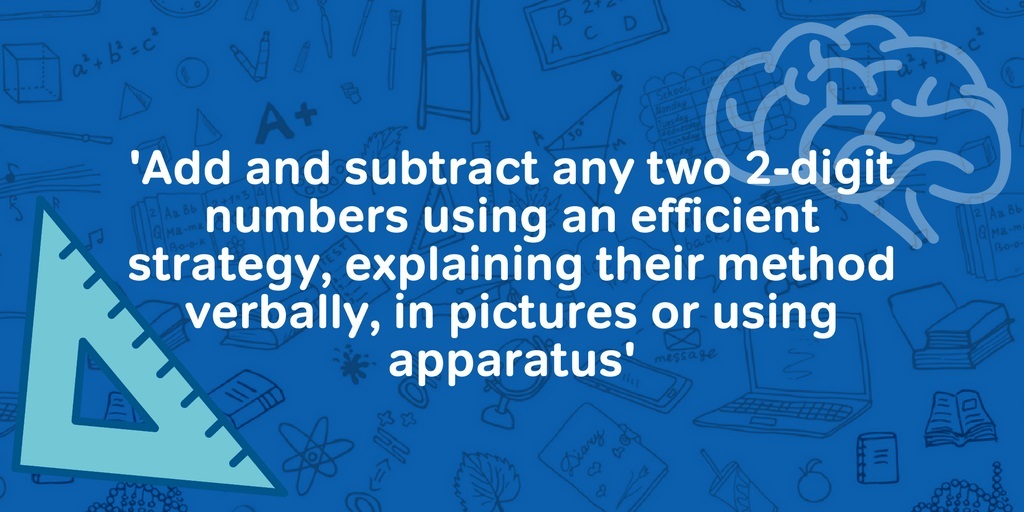
As long as KS1 children are taught addition and subtraction in a way that ensures they understand what happens when numbers are added and subtracted (probably using pictures and apparatus) it is welcome that they should then choose to use efficient strategies to carry out these operations.
The strategies they might choose could be mental or written (free daily arithmetic practice like Third Space Fluent in Five is great for this); they could indeed be strategies involving manipulatives or images.
With efficient strategies not being exemplified here, there is the potential for this to be applied contextually for each child: which way is the most efficient for them?
Impact For KS2 Teachers
Having children enter KS2 with the idea that they should always choose the most efficient strategy stands them in good stead for the Maths that they will encounter in Years 3-6.
Children who are able to think critically about which methods to use should eventually become very fluent and able mathematicians.
To help your pupils choose between mental and written arithmetic strategies more effectively, download Third Space’s popular Fluent in Five Daily Arithmetic Practice for free.
Changes To KS1 Assessment: Better Links Between Categories
Some objectives are now easier to follow through from one category to the next. See examples of newly joined-up strands like the objectives pertaining to money and number bonds.
At WTS children should know the values of different coins whereas at EXS they have to use different coins to make the same amount.
The objectives relating to knowledge of number bonds highlight the importance of knowing number bonds even when working towards the end of KS1 standard. But, that at the expected standard, children should be able to apply this number bond knowledge in greater and more useful ways.
Impact For KS2 Teachers
Teachers can be certain that even children entering KS2 working below the expected standard will have a range of basic knowledge on which to build.
With (what might be seen as) a slightly raised bar for these children, there’s a wider foundation to build upon in Year 3 where there is the potential for them to make accelerated progress in order to catch up with their peers.
New KS1 Assessment Frameworks: Fractions Of Numbers Or Shapes
In the EXS category a new bit of clarification is provided that is really useful for Maths teachers.
The current framework objective asks that teachers assess children on whether or not they know that that all parts must be equal parts of the whole. And that they can identify 1/3, 1/4, 1/2, 2/4 and 3/4 which could easily interpreted as only relating to shape.
The new objective states that children should ‘identify 1/4, 1/3, 1/2 , 2/4, 3/4, of a number or shape, and know that all parts must be equal parts of the whole’.
Impact For KS2 Teachers
If children are coming up to KS2 knowing fractions of numbers, rather than just shapes, then KS2 teachers can be more certain that the KS2 fractions content has a better chance of being understood.
With fractions taking up a large amount of curriculum time in KS2, and often being an area that some children struggle with, a secure understanding of how to find fractions of numbers will ready them for more.
In the meantime, while pupils are still coming up without that knowledge, you can use free resources such as this free Year 6 Fractions Decimals & Percentages Diagnostic Quiz, to identify and plug gaps.
Or you can download the Year 5 version for free here.
New KS1 Assessment Frameworks: No Practical Scales
An interesting omission in both the EXS and GDS categories is the specified requirement for children to read scales in practical situations.
This certainly makes this objective easier to attain – and less messy for teachers trying to keep the water tray under control in their Maths lesson.
Arguably it is more difficult for children to read scales when water is sloshing about inside their cylinder, as a result teachers often supplement the practical lessons with more paper-based activities.
Fortunately, this evidence will suffice in next year’s teacher assessment.
Impact For KS2 Teachers:
In a Key Stage that is already more likely to eschew practical equipment in favour of more paper-based work it could be harmful for children.
Especially if they haven’t already been (and don’t continue to be) exposed to the real-life contexts of the Maths that they are learning. As learning out of this context can often be shallow.
Summary: What New KS1 Assessment Changes Mean For School Leaders
So, with some positive changes (and potentially some negative ones), school leaders will be responsible for making sure that:
– KS1 teachers teach the full curriculum despite the limited objectives in the assessment framework
– Children are given opportunities to apply their learning in lots of different ways
– KS1 pupils are able to talk confidently about their Maths work (point 14 of this Third Space blog makes a great point about verbal reasoning!)
– There is a focus in KS1 on children being able to think carefully about which methods of calculation to use
– KS1 children must be supported to use equipment to model mathematical concepts
– Children’s reasoning and ability to understand real-life contexts for the Maths they learn must start in KS1
– Children, regardless of prior attainment, are given the opportunities to access the full range of Maths work from the curriculum in order to give them the best possible transition into KS2
Summary: What New KS1 Assessment Changes Mean For KS2 Teachers
Whilst it depends on how KS1 teachers have approached their teaching, there are some real positives to the changes that have been made. On the whole KS2 teachers should look forward to teaching children who:
– Are well versed in giving verbal explanations about the Maths that they can do
– Can use a range of models and images to demonstrate their conceptual understanding
– Have a solid understanding of some of the basic concepts that underpin the KS2 Maths curriculum
– Think about which methods of arithmetic to use in order to be time-efficient
– Have experience of applying basic facts and strategies to a wide range of problems
At the same time as there being positives, there are some potential pitfalls to be aware of. KS2 teachers may begin to find that children:
– Have not had adequate experience of applying basic facts and strategies to a wide range of problems
– Aren’t as secure with quick recall of facts such as halves and doubles of numbers
– Have not experienced Maths practically enough in all areas of the curriculum and thus struggle to visualise and understand the real-life contexts in which Maths strategies are applicable
As always, a whole-school approach to the teaching and learning of mathematics, where Maths leaders bring teachers from both Key Stages together often, will ensure that a smooth transition occurs and that children moving from KS1 to KS2 don’t lack the skills necessary to their success in Year 3 maths and beyond.
Liked this? Find out what the future of assessment in primary schools looks like in our latest blog.
You may also be interested in:
DO YOU HAVE STUDENTS WHO NEED MORE SUPPORT IN MATHS?
Every week Third Space Learning’s maths specialist tutors support thousands of students across hundreds of schools with weekly maths intervention programmes designed to plug gaps and boost progress.
Since 2013 these personalised one to one lessons have helped over 150,000 primary and secondary students become more confident, able mathematicians.
Learn about the diagnostic assessment or request a personalised quote for your school to speak to us about your school’s needs and how we can help.

![What NEW KS1 Assessment Frameworks Mean For KS2 [Maths]](https://thirdspacelearning.com/wp-content/uploads/2023/10/The-primary-school-guide-to-maths-assessments-featured-image.png)

